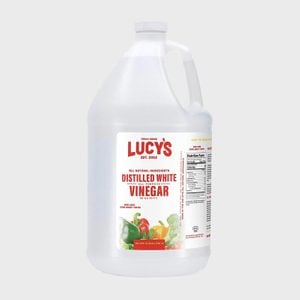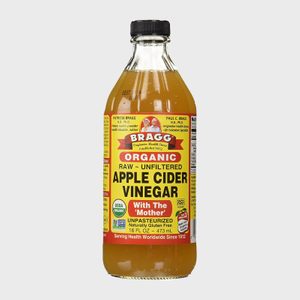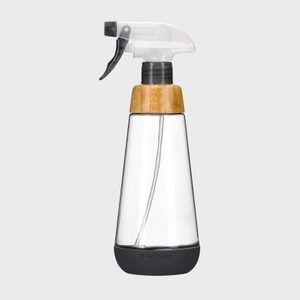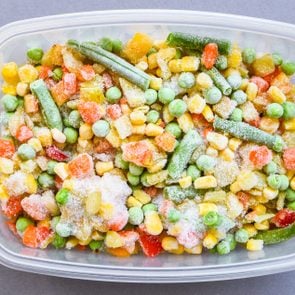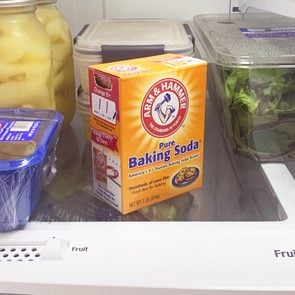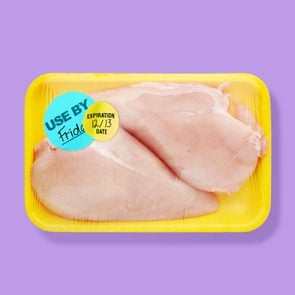How to Make a Vinegar Fruit Wash That Really Cleans Your Produce
Updated: Jan. 02, 2023
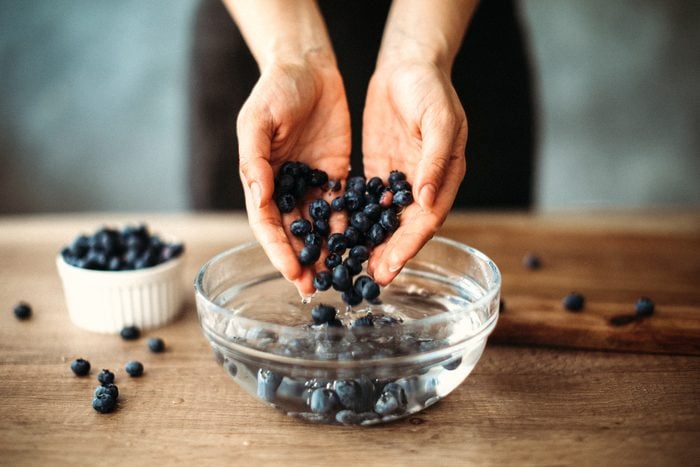
Chances are, you’re washing your fruits and veggies before eating them. After all, you never know what could be on them—or who touched them. But while that rinse under the faucet is certainly better than nothing, it may not be enough to remove bacteria, pesticides and other things you really don’t want to be eating. Using a vinegar fruit wash, however, can change everything.
Thanks to the amazing powers of vinegar, it’s easy to clean your produce without chemicals—or a pricey product. And that’s not the only reason to use a vinegar fruit wash. It can also radically change your fruit and vegetable storage, helping you keep food good in the fridge longer—from strawberries and blueberries to broccoli and your favorite leafy greens. It can even help other foods in the fridge last longer, especially depending on your fridge organization. Once you realize how simple and inexpensive it is, you’ll make it a regular part of your food storage routine.
Get Reader’s Digest’s Read Up newsletter for more cleaning, humor, travel, tech and fun facts all week long.
What is a vinegar fruit wash?
A vinegar fruit wash is an easy homemade solution that can be used to clean fruits and vegetables. While there are commercial vinegar produce washes available on the market, using a simple mixture of water and vinegar will yield the same results for a fraction of the price.
What does a vinegar fruit wash do?
A vinegar fruit wash removes pesticides, mold and bacteria from your fruit and vegetables—all the icky stuff you may not have realized was there in the first place. “Using a vinegar wash helps to remove the majority of those contaminants,” says Elena Terry, executive chef and founder of Wild Bearies in Wisconsin Dells, Wisconsin. “It’s safe, and it’s the best way to prepare any fresh fruit or vegetables when you get them home.”
Both white vinegar and apple cider vinegar contain between 5% and 6% acetic acid, which kills pathogenic bacteria. Washing fruit with vinegar can also kill the spores that cause mold, suppress mold growth for far longer than if you hadn’t rinsed your produce with it and prevent you from introducing mold spores to the inside of your fridge (where they can spread to other foods and cause more spoilage). But be careful: This trick doesn’t kill any mold that has already grown, so make sure to do it before your produce starts to get fuzzy.
When should you use a vinegar fruit wash on your produce?
The sooner, the better, according to Cassandra Loftlin, food editor and resident chef of Ark Republic. “Ideally, you should wash your fruit as soon as you receive it, but definitely before storing it in your refrigerator or in a bowl on your counter,” she says. “Dirty produce can easily contaminate other foods.”
Once you’ve washed your produce, it’s important to dry it thoroughly before you store it. Excess moisture can accelerate the spoilage of some fruits by turning them into attractive environments for airborne mold and bacteria. Remember: Vinegar kills only the bacteria that’s already on the surface—your produce may be clean after washing, but clean things can always get dirty again!
What types of produce should you use a vinegar fruit wash on?
While you may have heard about using a vinegar wash for strawberries, you should ideally wash all your fruits and vegetables with it. Multiple studies have found that the average piece of fruit from the supermarket hosts hundreds of millions of bacteria on its surface. Though most of these bacteria are harmless, there’s no way to know if harmful pathogens are in the mix.
The FDA estimates that nearly 48 million people get sick from food contaminated with harmful germs each year, and many of these illnesses can be traced to fruits and vegetables. Despite the strict food-safety standards that farmers, processors and markets abide by, there are still multiple points in the supply chain in which produce can accidentally become host to foodborne illnesses like salmonella and E. coli. If you’re worried about food safety, using a vinegar fruit wash on all your fruits and vegetables will help put your mind at ease. And don’t worry—vinegar’s acetic acid is powerful enough to kill germs but not powerful enough to harm delicate fruits like berries (which, by the way, rank among the best cancer-fighting foods).
Can you skip the vinegar wash on fruits and vegetables when you don’t eat the outsides? Nope! “You should always wash produce that has inedible rinds and peels,” says Loftlin. “Cutting into an unwashed orange can push bacteria into the fruit and spread the bacteria onto the flesh.”
How do you make a vinegar fruit wash?
1. Gather your supplies
To make a vinegar fruit wash, you’ll need vinegar (of course!), water and either a spray bottle or large bowl to put it in. If you’re using a spray bottle, a funnel will be helpful. The best vinegar to use for a vinegar fruit wash is either distilled white vinegar or apple cider vinegar. Do not use wine vinegar, balsamic vinegar or flavored vinegar, which will affect the way your fruit tastes.
2. Mix your vinegar fruit wash solution
Mix one part vinegar with three parts water—and that’s it!
How do you use a vinegar fruit wash?
Spraying vs. soaking
The way you use your fruit and vegetable wash will depend on what you’re cleaning. For bigger, smooth-skinned fruits like apples, pears, plums or peaches, a spray bottle works best. For small fruits, like cherries, berries or grapes, or fruits with textured peels like oranges and avocados, a quick soak in vinegar fruit wash is the way to go. Both methods are equally adept at destroying bacteria, but the spray bottle method uses less water, while the soaking method makes it easier to handle smaller items.
Follow the same rules for vegetables, and use the soaking method for vegetables with lots of nooks and crannies, like broccoli, brussels sprouts and cauliflower. The same goes for greens like lettuce leaves, spinach and kale; also make sure to separate the leaves during the process and dry them well using a salad spinner.
The spray-bottle method
- Adjust the nozzle to the “spray” setting.
- Working with one piece at a time, spritz your item with the vinegar fruit wash on all sides.
- Place the vinegar-spritzed item in a colander in the sink.
- Let it sit for five minutes.
- When the five minutes are up, rinse your fruit well with cold water.
- Pat it dry with either a clean kitchen towel or paper towels.
The soaking method
- Mix your vinegar fruit wash in a large bowl.
- Add your fruit, and gently agitate it with your hands.
- Let it sit for about three minutes.
- Strain it into a colander in the sink, then rinse with cold water.
- Move the fruit to a sheet pan lined with a clean cloth towel or paper towels, and shake gently to evenly distribute the fruit onto a single layer.
- Allow it to air-dry before you put it away (you can use one of the best food storage containers for that). You can skip this step if you want to eat your fruit immediately.
Are there any special tips for using a vinegar fruit wash?
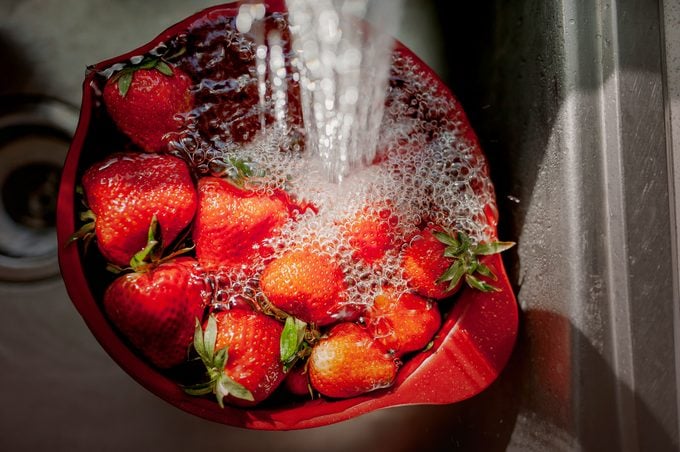
A thorough rinse with plain water afterward will make sure your fruit has no lingering unwanted vinegar taste. But if you’d like to use your vinegar fruit wash as an excuse to add a little extra flavor, add some fresh lemon or lime juice along with the vinegar, skip the rinsing and let your fruit air-dry. That addition of citrus can add a pleasant hint of acidity to strawberries, blueberries or any fruits that are super sweet.
Now that you know how to clean fruit and vegetables with vinegar, take your kitchen knowledge to the next level by finding out which fruits and vegetables you shouldn’t store together.
Sources:
- Elena Terry, executive chef and founder of Wild Bearies
- Cassandra Loftlin, food editor and resident chef at Ark Republic
- Frontiers in Microbiology: “An Apple a Day: Which Bacteria Do We Eat with Organic and Conventional Apples?”
- PLOS ONE: “Bacterial Communities Associated with the Surfaces of Fresh Fruits and Vegetables”
- FDA: “7 Tips for Cleaning Fruits, Vegetables”
- Food Safety News: “Vinegar can help home cooks battle bacteria on leafy greens”
